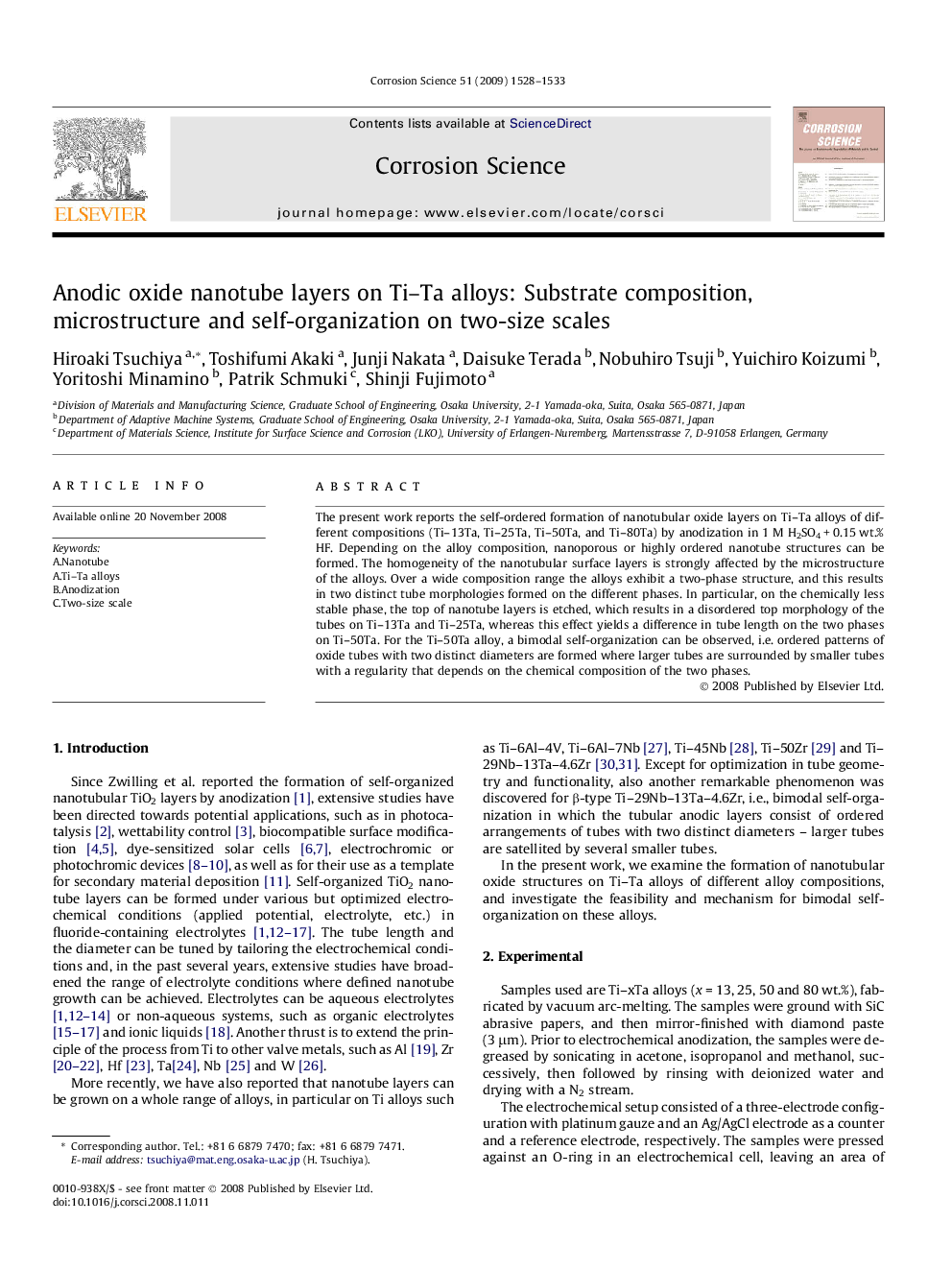| Article ID | Journal | Published Year | Pages | File Type |
|---|---|---|---|---|
| 1471179 | Corrosion Science | 2009 | 6 Pages |
The present work reports the self-ordered formation of nanotubular oxide layers on Ti–Ta alloys of different compositions (Ti–13Ta, Ti–25Ta, Ti–50Ta, and Ti–80Ta) by anodization in 1 M H2SO4 + 0.15 wt.% HF. Depending on the alloy composition, nanoporous or highly ordered nanotube structures can be formed. The homogeneity of the nanotubular surface layers is strongly affected by the microstructure of the alloys. Over a wide composition range the alloys exhibit a two-phase structure, and this results in two distinct tube morphologies formed on the different phases. In particular, on the chemically less stable phase, the top of nanotube layers is etched, which results in a disordered top morphology of the tubes on Ti–13Ta and Ti–25Ta, whereas this effect yields a difference in tube length on the two phases on Ti–50Ta. For the Ti–50Ta alloy, a bimodal self-organization can be observed, i.e. ordered patterns of oxide tubes with two distinct diameters are formed where larger tubes are surrounded by smaller tubes with a regularity that depends on the chemical composition of the two phases.
